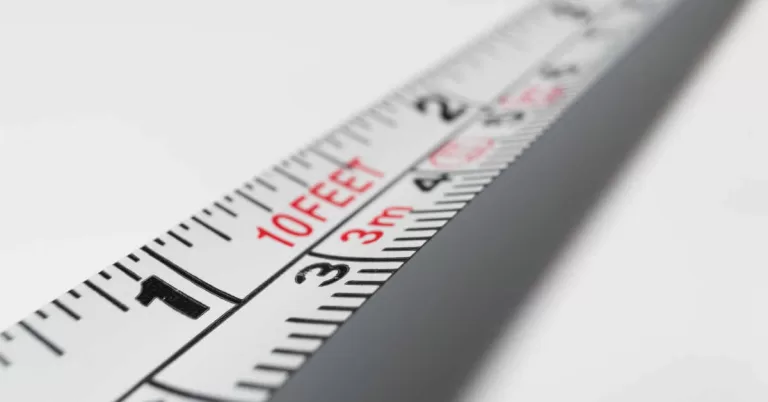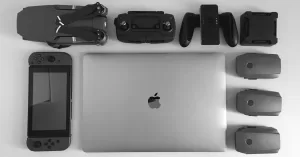If you’re planning to travel soon and need to pack your bags, you may have come across the term “62 linear inches” when researching airline baggage restrictions. So, what exactly does this phrase mean, and how can you make sure that your luggage meets the requirements?
In this post, we will break down what 62 linear inches means, why it is important, and how to measure your luggage to ensure that it follows this size limit.
What Is 62 Linear Inches?
First, let’s define what “linear inches” means. Linear inches is a measurement used by airlines to figure out the size of checked luggage. It’s calculated by adding together the outside length, width, and height of a suitcase or bag. For example, if your bag measures 24 inches long, 18 inches wide, and 20 inches high, its linear inches would be 62 (24+18+20=62).
So, when airlines refer to a 62 linear inch limit, they are saying that the combined length, width, and height of your checked luggage cannot exceed 62 inches. This limit is usually set by the airline and varies depending on the carrier, the destination, and the type of fare you have bought.
However, Allegiant Air is an exception to this standard. This airline’s size limit for checked bags is 80 linear inches.
We should also mention that most airlines also give the metric equivalent of this measurement when describing size limits. It is either expressed as “157 centimeters” or “158 centimeters”, depending on the airline. To calculate the size of your luggage, you use the same method as you would for linear inches, except that you’d use a measuring tape that has a metric scale.
Why Do Airlines Limit Luggage to 62 Linear Inches?
Airlines have size limits on luggage for several reasons:
- It ensures that luggage can fit into the cargo hold of a plane safely and securely.
- It helps airlines manage their costs by reducing the weight of the plane and making the most of its space in the cargo hold.
- It ensures that all passengers have an equal opportunity to bring their luggage on board and that the airline can run efficiently. This is especially important on travel routes where a baggage embargo is in effect.
What Happens If Your Luggage Is Larger Than 62 Linear Inches?
If your luggage exceeds the 62 linear inch limit, you may be charged an oversize fee, which can range from $50 to $200 or more, depending on the airline. Also, some airlines may refuse to accept your luggage altogether, or require you to re-pack your bags to meet the requirements.
Hot Tip: After you have booked your flight, check your reservation email for the baggage allowances for your trip. Allowances can differ, depending on your itinerary.
How to Measure Your Luggage for 62 Linear Inches?
It’s important to note that when measuring your luggage, you should include any handles, wheels, straps, or other protrusions in your measurements. Airlines include these features in their size limits, so it’s important to take them into account when calculating the linear inches of your bag.
Important: When using a measuring tape to measure your luggage, make sure that you’re using the correct scale. Many measuring tapes have a metric scale (inches) on one side, and metric (centimeters) on the other.
To measure the size of your luggage, these are the steps you should follow:
1: Measure the Length of Your Luggage
Place your luggage on a flat surface with the longest side facing you. Use a measuring tape to measure the outside length of your luggage from one end to the other.
2: Measure the Width of Your Luggage
Turn your luggage to its side and measure the outside width from one side to the other.
3: Measure the Height of Your Luggage
Turn your luggage to its other side and measure the outside height from the bottom to the top.
4: Add Up the Dimensions
Add up the length, width, and height of your luggage to get the total linear inches. If the total is 62 inches or less, your luggage complies with the size limit.
If your luggage exceeds 62 linear inches, you may need to consider packing less or buying a smaller suitcase.
Tips For Staying Within The 62 Linear Inches Limit
If you’re struggling to stay within the 62 linear inches limit, here are some tips that can help:
Choose a Smaller Suitcase
Go for a smaller suitcase that is designed to meet airline size requirements. Many luggage brands offer suitcases that are specifically designed to fit within the size limits of major airlines.
Many suitcases available on Amazon have 3 different size categories available:
- 21-inch
- 25-inch
- 28 to 29-inch
Helpfully, Amazon labels each of these size categories with their function. 21-inch is labeled as carry-on, while the two larger sizes are listed as checked. However, be wary of the largest category. Their measurements often exceed 62 linear inches. The suitcase’s dimensions are included in the product description, so make sure you do your calculations before hitting the “Buy Now” button. It’s a good idea to check your retailer’s return policy, in case (no pun intended) the luggage doesn’t meet your requirements.
Use Packing Cubes or Compression Bags
Use packing cubes or compression bags to organize your items and make the most of the available space.
Roll Your Clothes
Rolling your clothes instead of folding them can help save space and reduce the overall size of your luggage.
Pack Multi-Use Items
Pack versatile clothing items that can be mixed and matched to create multiple outfits, rather than packing a separate outfit for each day.
For example, you can pack a scarf that can double as a blanket or a sarong that can be worn as a dress.
Wear Your Bulky Items
Wear your bulkiest items on the plane, such as a heavy jacket or boots, to save space in your bag.
Consider Leaving Non-Essential Items at Home
Consider leaving non-essential items, such as hair dryers or extra pairs of shoes, at home to save space.
If you will be staying at a hotel, you can contact the establishment to confirm what toiletries and accessories they provide in the room. You can then leave some of these bulky items at home.
Share Your Luggage Space with Others
If traveling with a partner or family, consider sharing luggage to spread the weight and reduce the number of bags you need to check.
Final Thoughts
62 linear inches is the maximum size limit for checked baggage on virtually all U.S. airlines. By measuring your luggage properly and following the tips we’ve outlined, you can make sure that your luggage follows this size limit and avoid any extra fees or inconvenience when traveling. Remember, packing efficiently and within the airline’s size limits can help make your travel experience more comfortable and stress-free.
Remember to always check your airline’s website or contact their customer service for the latest information on baggage allowances.



